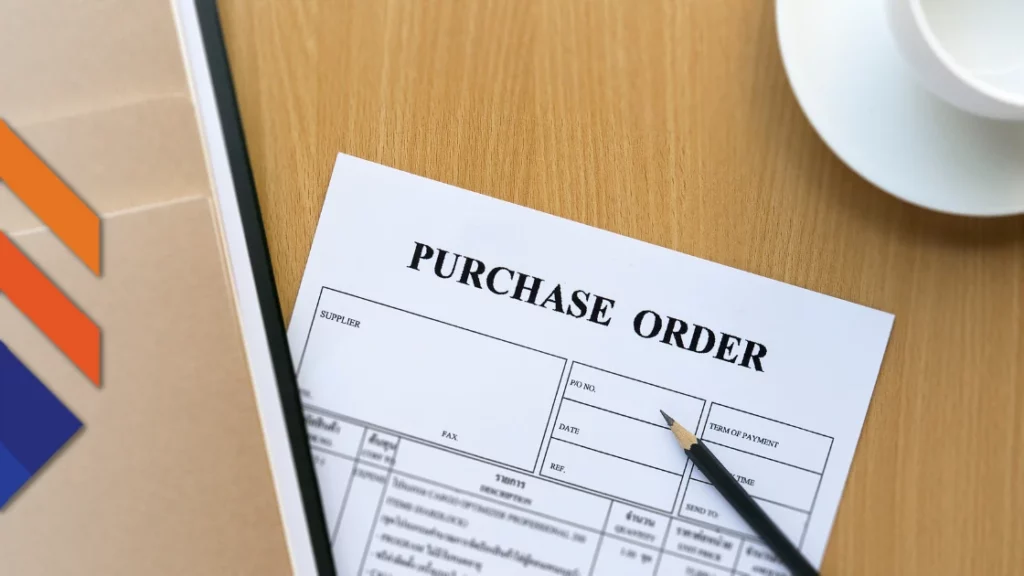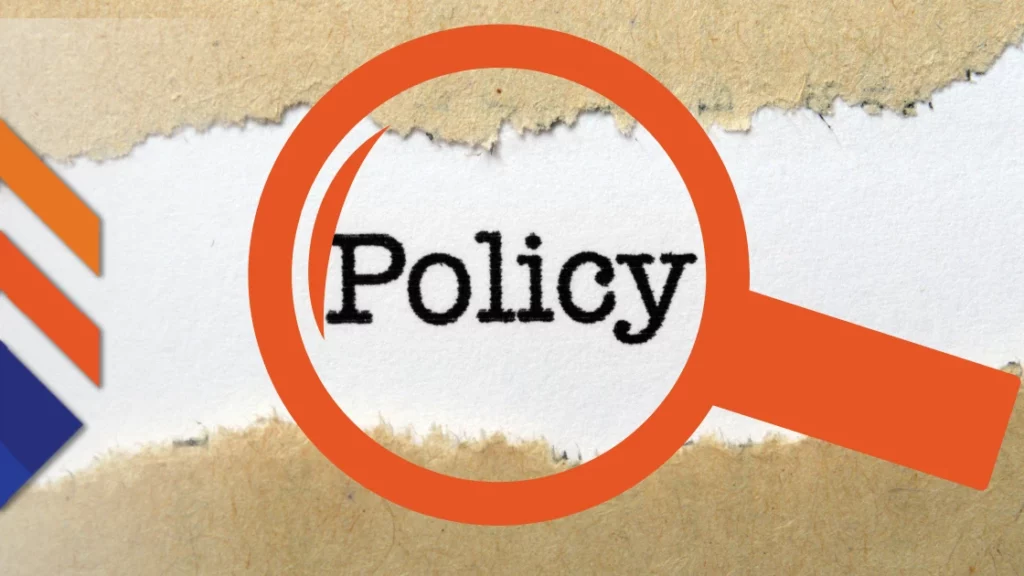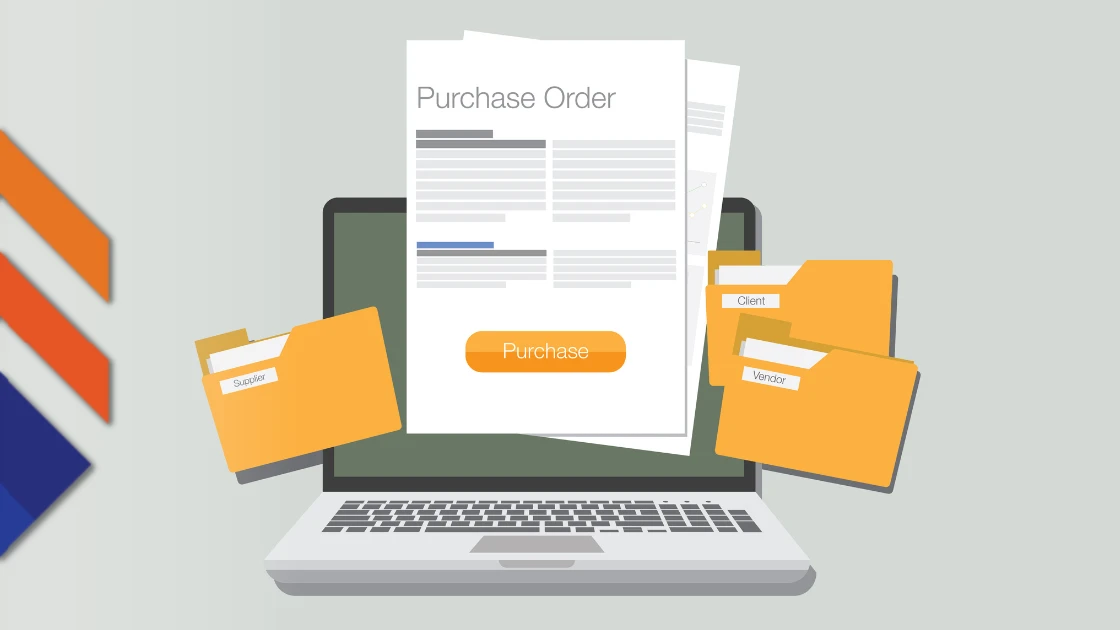Purchase Order Management – Maintaining Consistency
Contents
Inventory and purchase order management are critical aspects of managing any business that sells physical goods, and that holds whether you are managing a national business or a local brick-and-mortar shop serving a more focused audience of consumers. But amid the hustle and bustle of managing your day-to-day operations, it is all too easy to lose sight of your inventory and pending purchase orders.
That is why you need to pair effective purchase order management (POM) practices with some modern technologies. Doing so will not only enhance your ability to keep up with orders and inventory but also help you maintain a consistent and efficient delivery schedule.
With that in mind, let’s take a deep dive into all things POM. Join us as we explore everything from POM strategies to how you can find the right tech for your business.
What Is Purchase Order Management?

A purchase order (PO) is a document that outlines what items a business intends to buy from a vendor. Once the recipient accepts or signs the PO, it becomes a legally binding agreement.
A PO must include the following details:
- The total price of the order
- The expected delivery date
- The number of products being purchased
- The types of goods or services the business intends to purchase
- The name of the vendor and buyer
As the name suggests, “purchase order management” refers to the process of governing the creation and management of POs, and a company’s POM efforts will involve creating policies that outline how those POs are generated, tracked, and processed. These policies will help the business maintain adequate inventory and keep its deliveries consistent.
Purchase Order Management Basics
While every company should tailor their POM practices to their unique needs, the following common steps are involved in any PO workflow:
Issuing the PO
The first step in any POM workflow involves generating the PO itself. After the PO is created, the order must pass an approval process. Once the review team verifies that the PO was generated in accordance with company policy, it is then routed to the vendor.
Negotiating and Agreeing to Terms
Upon receipt of the PO, the vendor will carefully review the terms to verify that they can meet them. In addition to reviewing the proposed price, the vendor will consider requirements such as delivery time and item quantity and then either accept the PO terms as-is or renegotiate its terms with the issuer.
Tracking and Delivery of Goods

Once the goods are shipped, the buyer will be provided with tracking information they can use to receive regular updates on the status of their order. Not all vendors and supply chains support real-time order tracking, though. In these instances, buyers will have little access to updates while their shipment is in transit.
Invoicing
The vendor will generate an invoice and deliver it to the purchaser. The invoice will include not only the amount owed but the due date as well.
Order Matching and Delivery of Payment
Before the invoice is routed to the accounts payable team, it is checked against the actual goods received and the original PO, which ensures conformity and safeguards against any discrepancies between POs and invoices. If everything checks out, the PO is archived, and the invoice is paid.
Best Practices for Streamlining Purchase Order Management
At first glance, the purchase order workflow seems simple enough, but it can easily become muddled and inefficient, especially if your organisation relies on manual review processes or has not yet created clear PO guidelines.
Fortunately, you can optimise your POM practices through the following means:
Developing Clear Policies

When your team has questions about POM, they should be able to turn to your company’s policies for guidance. However, if your policies are vague or easily misconstrued, reviewing your operating procedures will leave your team with even more questions than they initially had. With that in mind, we suggest reviewing your current policies and reworking them if needed.
Creating Expedited Review Processes
A typical purchase order workflow will include at least two review processes. The first occurs before a newly generated PO is sent to a vendor, while the second takes place once the invoice is received. Both review processes have the potential to create friction in your supply chain and interfere with your delivery schedules.
To circumvent these problems, make sure that you give your team the tools they need to expedite the review processes. For instance, you could create checklists for PO approval and post-delivery order matching. Your review teams can leverage these checklists to quickly verify basic but essential information like delivery dates, shipping methods, and vendor contact details.
Investing in Automation Technology
If you want to truly modernise your processes with POM software. You need to deploy powerful automation tools that allow you to reduce your reliance on tedious, manual workflows, expedite your PO creation and reviews, and more efficiently track your deliveries.
There are several ways to incorporate automation technology into your business model, though the most pragmatic approach is to implement an all-in-one procurement and POM solution. Such a solution can cut costs, improve efficiency, and provide real-time insights into your inventory.
Benefits of Using Modern Purchase Order Management Solutions
The procurement and POM software industry is growing at a lightning-fast pace. According to PR Newswire, this market will be valued at $9.5 billion by 2028.
There is one simple reason why this market is growing so quickly — the technology works. Businesses of all sizes can be more competitive and cut their costs by using cloud-based, scalable POM software.
Leading-edge POM technologies have the potential to reshape the way you:
- Generate POs
- Review purchase orders
- Interact and negotiate with vendors
- Handle inbound invoices
- Track inventory
In other words, modern POM and procurement solutions take the hassle out of the involved processes. These technologies provide you with automation tools that allow you to get more work done, maintain consistent deliveries, and keep goods flowing so that you can effectively serve your customers.
Choosing the Right Purchase Order Management Software
The POM software that you choose to implement will have a profound impact on the trajectory of your business. That is why you need to invest in a dynamic, scalable, all-in-one solution like the one provided by Datapel Systems.
If you’re interested in learning more, schedule a discovery call today, and take advantage of our personalised demo.
FAQ’s
1. What is Purchase Order Management?
Purchase Order Management (POM) is the process of overseeing the creation, approval, tracking, and processing of purchase orders within a business. A purchase order is a legally binding document that specifies the details of goods or services a business intends to purchase from a vendor. POM involves establishing policies and workflows to efficiently manage purchase orders and ensure timely delivery of goods.
2. What are the 4 types of Purchase Order?
The four main types of purchase orders are:
- Standard Purchase Order: Used for one-time purchases of goods or services at agreed-upon prices and terms.
- Blanket Purchase Order: Covers multiple deliveries of goods or services over a specified period, often used for recurring purchases.
- Contract Purchase Order: A long-term agreement with a supplier, outlining terms, conditions, and pricing for ongoing purchases.
- Planned Purchase Order: Based on forecasted demand, allowing suppliers to prepare for future orders and streamline production.
Each type serves different procurement needs and offers varying levels of flexibility and commitment.
3. Why is Purchase Order Management important?
Effective Purchase Order Management is crucial for several reasons:
- Ensures accurate inventory management by tracking goods ordered and received.
- Facilitates financial planning and budgeting by providing visibility into upcoming expenses.
- Helps maintain supplier relationships through clear communication and timely payments.
- Reduces the risk of errors, fraud, and discrepancies in purchasing processes.
- Enhances overall efficiency by streamlining procurement workflows and approvals.
By implementing robust POM practices, businesses can optimise resource utilisation, minimise costs, and improve operational performance.
4. What is the PO process?
The Purchase Order (PO) process typically involves the following steps:
- Issuing the PO: Creation of the purchase order, including details such as item quantity, price, delivery date, and vendor information.
- Negotiating and Agreeing to Terms: Review and acceptance of the PO terms by the vendor, possibly followed by negotiations to finalise terms.
- Tracking and Delivery of Goods: Monitoring the shipment status and receipt of ordered goods, often aided by tracking information provided by the vendor.
- Invoicing: Generation of an invoice by the vendor, specifying the amount owed and payment due date.
- Order Matching and Payment: Verification of received goods against the PO and invoice to ensure accuracy, followed by payment processing.
Each step requires careful coordination and adherence to established procedures to ensure smooth transactional processes.
5. Who prepares a PO?
Purchase orders are typically prepared by authorised personnel within a company responsible for procurement, such as purchasing managers or procurement officers. These individuals are tasked with assessing inventory needs, sourcing suppliers, and initiating purchase transactions in accordance with company policies and procedures.
6. How do I process a PO payment?
Processing a PO payment involves the following steps:
- Invoice Verification: Match the received invoice with the corresponding purchase order and goods receipt to ensure accuracy.
- Approval: Obtain necessary approvals from relevant stakeholders, such as department heads or finance managers, to authorise payment.
- Payment Processing: Initiate payment to the vendor through the chosen payment method, such as electronic funds transfer or cheque issuance.
- Recordkeeping: Maintain records of the payment transaction for accounting and auditing purposes, including documentation of invoice payment date and amount.
By following these steps, businesses can ensure timely and accurate payment processing for purchase orders.

In my role, I oversee the development of insightful blogs that delve into the intricacies of warehouse management. Each piece reflects my dedication to empowering businesses through informative content. Through my team’s extensive experience in the industry, we aim to bring clarity to the complexities of WMS, helping businesses make informed decisions.
Join me on a journey through the ever-evolving landscape of warehouse technology as we explore the latest trends, industry insights, and practical tips to streamline your operations. Feel free to connect, and let’s embark on a collaborative exploration of how WMS can redefine your business efficiency.
Cheers to innovation, efficiency, and the exciting world of warehouse management!







